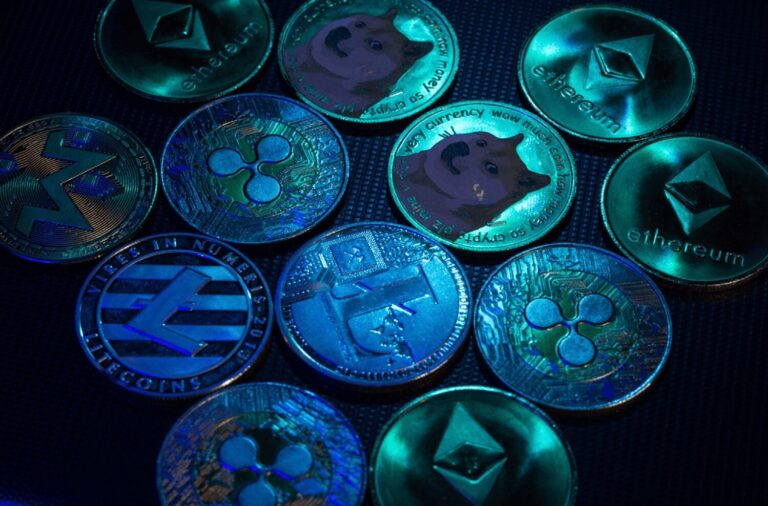
Solana
Introduction
The Solana blockchain has emerged as one of the fastest and most scalable networks in the cryptocurrency industry, capable of processing over 65,000 transactions per second with low fees. While it boasts an expanding ecosystem of decentralized finance (DeFi) projects, NFTs, and dApps, many users still hold their assets on other blockchains like Ethereum, Binance Smart Chain, or Polygon.
This is where bridging comes into play. Blockchain bridges allow users to transfer assets from one chain to another, enabling them to take advantage of Solana’s high-speed, low-cost environment without selling their existing tokens. In this guide, we’ll explore what bridging is, why you might want to bridge assets to Solana, the step-by-step process, trusted bridging tools, and important security tips to follow in 2025.
What Is Blockchain Bridging?
A blockchain bridge is a protocol that connects two separate blockchains, enabling the transfer of tokens, data, or other assets between them. Since blockchains operate independently and cannot directly communicate, bridges act as intermediaries to facilitate cross-chain interactions.
How It Works
-
Lock-and-Mint Model: Your asset is locked on the source blockchain, and a wrapped version is minted on the destination blockchain.
-
Burn-and-Release Model: When you send assets back, the wrapped token is burned, and the original is unlocked on the source chain.
For example, if you bridge USDC from Ethereum to Solana, the bridge will lock your Ethereum-based USDC and mint an equivalent amount of Solana-based USDC.
Why Bridge Assets to Solana?
Bridging assets to Solana offers several advantages:
a) Lower Transaction Costs
Ethereum’s gas fees can often reach several dollars per transaction. On Solana, transaction fees are typically less than $0.01.
b) Faster Transaction Speeds
Solana processes thousands of transactions per second, with near-instant confirmation times.
c) Access to Solana’s DeFi Ecosystem
Bridging allows you to use your assets in Solana-based DeFi platforms like Raydium, Orca, and Solend.
d) NFT Marketplaces
You can participate in Solana’s NFT marketplaces such as Magic Eden without converting your crypto through a centralized exchange.
e) Portfolio Diversification
Having assets across multiple chains can improve liquidity access and reduce overexposure to one blockchain’s limitations.
Risks of Bridging
While bridging is useful, it comes with potential downsides:
-
Smart Contract Vulnerabilities – If the bridge’s code is flawed, funds may be at risk.
-
Centralization Risks – Some bridges rely on centralized validators that can be compromised.
-
Phishing Attacks – Fake bridge websites often target unsuspecting users.
-
Slippage & Fees – Some assets may incur swap fees or unfavorable exchange rates.
-
Asset Depegging – Wrapped tokens depend on proper collateral management; mismanagement can cause value loss.
Popular Bridges to Solana in 2025
Several reliable bridges allow asset transfers to Solana. As of 2025, some of the most trusted options include:
-
Wormhole Bridge – One of the most widely used Solana bridges, supporting multiple chains.
-
Allbridge – Known for its user-friendly interface and multi-chain support.
-
Portal Bridge (by Wormhole) – Simplified version of Wormhole with a focus on token transfers.
-
Mayan Finance – Specializes in swaps across chains with minimal fees.
-
Jupiter Aggregator with Cross-Chain Swaps – Offers integrated bridging within Solana’s leading swap aggregator.
Tip: Always verify bridge URLs from official sources to avoid phishing.
How to Bridge Assets to Solana (Step-by-Step Guide)
Below is a general process for bridging, using Wormhole as an example. The steps are similar for most bridges.
Step 1: Set Up a Solana Wallet
Before bridging, you’ll need a Solana-compatible wallet. Popular options include:
-
Phantom – Easy to use and integrates with most dApps.
-
Solflare – Supports both browser and mobile.
-
Backpack Wallet – Known for multi-chain capabilities.
Action:
Download the wallet, create a new account, securely store your seed phrase, and fund it with a small amount of SOL for transaction fees.
Step 2: Choose Your Bridge
Go to the official bridge website. For Wormhole:
-
Official Link: https://wormhole.com (Verify on the official site or GitHub before proceeding.)
Step 3: Connect Your Source Wallet
If your assets are on Ethereum or another chain, connect the respective wallet (e.g., MetaMask for Ethereum).
Step 4: Select Asset and Amount
Choose the token you want to bridge (e.g., USDC, ETH, WBTC) and the amount to transfer.
Step 5: Connect Your Destination Wallet
Connect your Solana wallet (Phantom/Solflare). Ensure you’ve copied the correct Solana address.
Step 6: Approve and Pay Fees
Confirm the transaction in your source wallet. You may need to pay gas fees (on Ethereum, these can be higher than on Solana).
Step 7: Wait for Confirmation
Bridging may take from a few seconds to several minutes depending on the chains involved.
Step 8: Verify Receipt
Once complete, check your Solana wallet for the bridged asset. It may appear as a wrapped version of the original token.
Bridging Best Practices for Security
To protect your funds when bridging:
-
Double-Check URLs – Use only official bridge links from verified sources.
-
Use Small Test Transfers – Start with a small amount before sending large sums.
-
Keep Wallets Updated – Outdated wallet software can be exploited.
-
Beware of Fake Customer Support – Only rely on official documentation or channels.
-
Store Assets in Cold Wallets After Use – For long-term holding, transfer to cold storage.
Advanced: Bridging for DeFi Strategies
Experienced users can bridge assets to Solana to:
-
Provide liquidity in Solana DEXs like Raydium or Orca.
-
Farm yield in Solana-based lending platforms.
-
Buy NFTs on Magic Eden and resell across chains.
Cross-chain DeFi strategies are growing in popularity in 2025, especially for traders looking to arbitrage price differences between chains.
The Future of Bridging on Solana
By 2025, cross-chain interoperability is evolving with:
-
Trustless Bridges using zero-knowledge proofs for better security.
-
Native Multi-Chain dApps that eliminate the need for manual bridging.
-
LayerZero & Wormhole Integrations enabling seamless swaps across ecosystems without user complexity.
As blockchain ecosystems mature, the need for manual bridging may reduce, but for now, bridges remain a vital gateway to Solana’s ecosystem.
Conclusion
Bridging assets to Solana allows crypto users to leverage its fast, low-cost, and expanding ecosystem without selling their existing tokens. By understanding how bridges work, following a safe process, and choosing reliable tools, you can move your assets confidently between blockchains.
Whether you’re joining Solana’s DeFi markets, exploring its NFT scene, or diversifying your portfolio, knowing how to bridge assets securely is an essential skill for today’s multi-chain crypto investor.


